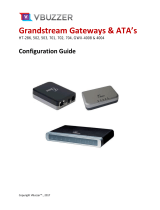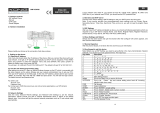
4
TABLE OF CONTENTS
Chapter 1...................................................................................................................................6
Introduction ..............................................................................................................................6
Overview.......................................................................................................................................................6
Package Content ..........................................................................................................................................7
Physical Details ............................................................................................................................................7
LED Display & Button.......................................................................................................................10
Chapter 2 Preparations & Installation.................................................................................12
Physical Installation Requirement............................................................................................................12
LAN IP address configuration via web configuration interface .........................................................13
Chapter 3 Network Service Configurations.........................................................................17
Configuring and monitoring your ATA from web browser....................................................................17
Overview on the web interface of ATA ..............................................................................................17
Manipulation of ATA via web browser...............................................................................................17
Chapter 4 VoIP Telephone Adapter Configurations............................................................19
Phone Book........................................................................................................................................19
Call Forward.......................................................................................................................................20
SNTP settings.....................................................................................................................................22
Volume Setting...................................................................................................................................22
Block Setting......................................................................................................................................23
Auto Answer (For VIP-157)...............................................................................................................24
Caller ID settings................................................................................................................................24
Dial Plan Settings...............................................................................................................................25
Flash Time Setting..............................................................................................................................27
Call waiting Settings ..........................................................................................................................27
T.38 (FAX) Settings............................................................................................................................28
Hot line Settings.................................................................................................................................28
Alarm Settings....................................................................................................................................29
LAN Settings......................................................................................................................................29
PC Settings.........................................................................................................................................30
DDNS Settings...................................................................................................................................31
VLAN Settings...................................................................................................................................32
DMZ Settings.....................................................................................................................................33
Virtual Server .....................................................................................................................................33
PPTP Settings.....................................................................................................................................34
Service Domain Settings ....................................................................................................................35
Port Settings.......................................................................................................................................36
Codec Settings....................................................................................................................................36





















